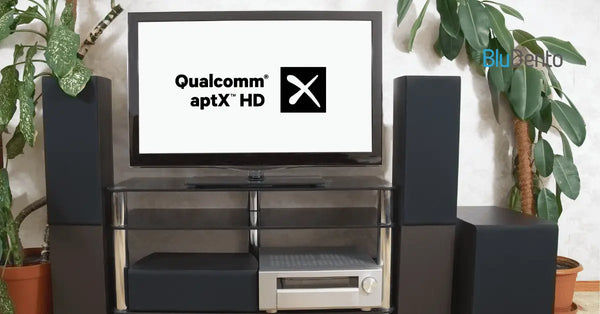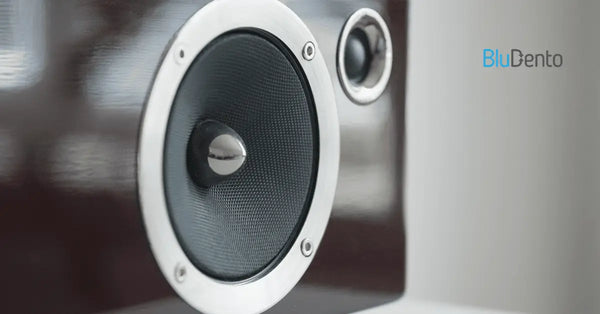BT Receiver Wireless Secrets For Pro Sound

In today's increasingly wireless world, the bt receiver wireless has become an essential component for modern audio systems. Whether you're looking to upgrade your home theater, enhance your car audio experience, or simply enjoy high-quality wireless sound throughout your living space, understanding the capabilities of bt receiver wireless technology is crucial.
These innovative devices work by receiving Bluetooth signals from your smartphone, tablet, or computer and converting them into audio output that can be connected to speakers, soundbars, or AV receivers. The beauty of bt receiver wireless systems lies in their ability to maintain high-quality audio transmission while eliminating the clutter of traditional cables. With advancements in Bluetooth technology, modern receivers now support high-resolution audio formats and offer improved latency performance, making them perfect for both music and video applications.
When exploring bt receiver wireless options, you'll encounter various form factors including compact dongles, tabletop units, and even built-in solutions for smart TVs. Each design serves specific use cases, from portable applications to permanent home installations. The versatility of these devices means there's a bt receiver wireless solution for almost any audio setup imaginable.
Why You Should Consider a bt receiver wireless for Your Audio Setup
The advantages of adopting bt receiver wireless technology extend far beyond simple convenience. One of the most significant benefits is the freedom from physical connections. Imagine being able to control your entire home audio system from your smartphone without worrying about tangled cables or limited connection ports. This wireless flexibility allows for creative speaker placement and easy reconfiguration of your listening environment.
Sound quality has dramatically improved in recent bt receiver wireless models. Many now support advanced audio codecs like aptX and AAC, which deliver near-CD quality sound through wireless transmission. This makes them ideal for audiophiles who refuse to compromise on audio fidelity. Additionally, bt receiver wireless devices often include multiple output options such as optical, RCA, and 3.5mm jacks, ensuring compatibility with virtually any audio equipment.
Another compelling reason to choose bt receiver wireless is the ability to connect multiple devices simultaneously. Modern receivers can remember several paired devices, allowing seamless switching between your smartphone, tablet, laptop, and other Bluetooth-enabled sources. This feature is particularly valuable in shared environments like offices or family rooms where different users might want to play their own content.
How to Choose the Best bt receiver wireless for Your Specific Needs
Selecting the right bt receiver wireless requires careful consideration of several key factors. First, determine your primary use case. Are you looking to connect wireless speakers in your living room? Want to add Bluetooth capability to your car stereo? Or perhaps you need a portable solution for outdoor events? Each scenario might require different features.
Range capability is crucial for bt receiver wireless devices. While standard Bluetooth has a range of about 30 feet, some advanced models use Bluetooth 5.0 or other technologies to extend this distance significantly. If you plan to use your receiver in a large space or through walls, look for models specifically designed for extended range performance.
Audio latency is another important consideration, especially for video applications. Some bt receiver wireless units implement proprietary technologies to minimize latency and ensure perfect synchronization between audio and video. This is particularly important for gaming or watching movies where lip sync issues can be distracting.
Battery life becomes a critical factor if you're considering a portable bt receiver wireless. Some models offer built-in rechargeable batteries with 10+ hours of playback time, while others require constant power through USB or wall adapters. Consider your power requirements and usage patterns when making this decision.
Setting Up Your bt receiver wireless: A Step-by-Step Installation Guide
Installing your bt receiver wireless is typically a straightforward process, but following the proper steps ensures optimal performance. Begin by identifying the appropriate connection method for your audio system. Most bt receiver wireless devices offer multiple output options including optical, coaxial, RCA, and 3.5mm analog connections.
For home theater integration, connect the bt receiver wireless to your AV receiver using the appropriate digital or analog input. Many modern soundbars and home theater systems now include built-in Bluetooth receivers, but if yours doesn't, adding a bt receiver wireless can transform it into a wireless-ready system.
In car audio applications, the installation process might involve connecting the bt receiver wireless to your vehicle's aux input or FM transmitter. Some advanced models can even integrate with your car's existing audio system for a seamless experience. Be sure to test the connection range and stability in your specific vehicle environment.
For multi-room audio setups, consider bt receiver wireless models that support synchronization with other wireless speakers. Some advanced systems allow you to create a whole-home audio network where different rooms can play the same music in perfect sync or have independent control.
Common Problems with bt receiver wireless and How to Fix Them
Despite their many advantages, bt receiver wireless devices can occasionally experience issues. One common problem is connection instability or dropouts. This is often caused by interference from other wireless devices operating on the 2.4GHz frequency band, such as Wi-Fi routers or microwave ovens. Try relocating your bt receiver wireless away from these sources or changing your Wi-Fi channel settings to resolve interference issues.
Audio-video sync problems can be particularly frustrating when watching movies or playing games. If you notice your bt receiver wireless causing lip sync issues, check for firmware updates or look for models specifically designed for low-latency audio transmission. Many manufacturers now offer "aptX Low Latency" certified devices that address this concern.
Pairing difficulties are another common challenge. If your bt receiver wireless won't connect to your device, try forgetting the device in your Bluetooth settings and re-pairing. Some models require specific button combinations to enter pairing mode, so consult your user manual for exact instructions.
Battery-related issues are more common in portable bt receiver wireless models. If you're experiencing shorter than expected battery life, check for power-hungry features like LED indicators or advanced audio codecs that might be draining your device. Proper charging habits and avoiding extreme temperatures can help extend battery longevity.
bt receiver wireless vs. Traditional Audio Receivers: Which is Right for You?
When comparing bt receiver wireless technology with traditional wired receivers, several key differences emerge. In terms of sound quality, modern bt receiver wireless units using high-resolution codecs can rival or even surpass analog connections, especially when considering the potential for interference in long cable runs.
Setup complexity is where bt receiver wireless really shines. While traditional receivers require careful cable management and often professional installation, most bt receiver wireless devices can be set up in minutes with minimal technical knowledge. This makes them ideal for renters or those who frequently reconfigure their audio setups.
Cost considerations vary depending on your requirements. Entry-level bt receiver wireless units can be remarkably affordable, while high-end models with advanced features might approach the price of entry-level traditional receivers. However, when factoring in potential savings from not needing extensive cabling and installation, bt receiver wireless often proves to be the more cost-effective solution.
Future-proofing is another important consideration. As more devices move towards wireless connectivity and manufacturers reduce physical output ports, bt receiver wireless offers a more future-proof solution that can adapt to changing technology trends.
The Future of Audio: How bt receiver wireless Technology is Evolving
The bt receiver wireless landscape is rapidly evolving with exciting new developments. Bluetooth 5.2 technology is already making its way into new models, offering improved data transfer rates, better power efficiency, and enhanced connection stability. These advancements mean even higher quality audio transmission and more reliable performance in crowded wireless environments.
Spatial audio support is another exciting frontier for bt receiver wireless technology. Newer models are beginning to support immersive audio formats like Dolby Atmos and Sony's 360 Reality Audio, creating a more enveloping listening experience. This trend is likely to accelerate as content providers continue to invest in immersive audio content.
Voice control integration is becoming increasingly common in bt receiver wireless devices. Many models now work seamlessly with Alexa, Google Assistant, or Apple's Siri, allowing for hands-free operation and smart home integration. This convergence of wireless audio and smart home technology represents the next frontier for bt receiver wireless solutions.
The rise of multi-room audio systems has also driven innovation in bt receiver wireless technology. Newer models support synchronization with other wireless speakers for whole-home audio experiences. Some advanced systems even allow for different music in different rooms with perfect synchronization when desired.
Frequently Asked Questions
What is the maximum range of most bt receiver wireless devices?
The effective range varies depending on the Bluetooth version and environmental factors. Standard Bluetooth 4.2 devices typically have a range of about 30-60 feet, while Bluetooth 5.0 and newer versions can extend this to 300 feet or more in optimal conditions. Walls, furniture, and other wireless signals can reduce this range.
Can I use bt receiver wireless for high-quality audio?
Yes! Many modern bt receiver wireless devices support high-resolution audio codecs like aptX HD, AAC, and LDAC. These codecs can transmit audio at bitrates comparable to wired connections, making them suitable for critical listening applications.
How do I connect multiple devices to my bt receiver wireless?
Most bt receiver wireless units can remember multiple paired devices. To switch between them, simply disconnect the current device and connect the new one from your device's Bluetooth settings. Some advanced models support simultaneous connections for seamless device switching.
Will bt receiver wireless work with my old stereo system?
Absolutely! One of the biggest advantages of bt receiver wireless is their ability to add wireless capabilities to older audio equipment. Look for models with the appropriate output connections for your system, whether that's RCA, 3.5mm, or digital optical.
Does bt receiver wireless cause audio lag?
Some bt receiver wireless models do experience latency, which can cause audio-video sync issues. However, many manufacturers now offer low-latency models using technologies like aptX Low Latency or AAC-LC to minimize this problem, making them suitable for gaming and video applications.
Can I use bt receiver wireless in my car?
Yes, many bt receiver wireless solutions work well in automotive environments. Look for models designed for car use that can connect to your vehicle's audio system through the aux input or FM transmitter. Some advanced models even support hands-free calling features.
Conclusion
The bt receiver wireless has revolutionized how we experience audio in our homes, cars, and portable environments. From simple music streaming to complex multi-room audio systems, these versatile devices offer unparalleled convenience without compromising on sound quality. As Bluetooth technology continues to evolve, we can expect even more impressive features and capabilities from future bt receiver wireless models.
Whether you're looking to upgrade an older audio system, create a wireless home theater setup, or simply enjoy the freedom of cable-free listening, there's a bt receiver wireless solution that will meet your needs. By understanding the key factors to consider when choosing a receiver and following proper setup procedures, you can ensure optimal performance and enjoyment from your wireless audio system.
As we move further into the wireless era, bt receiver wireless technology will continue to play a crucial role in shaping our audio experiences. From improved connectivity and enhanced sound quality to seamless integration with smart home systems, the future of audio is undeniably wireless. By staying informed about the latest developments and choosing the right bt receiver wireless for your specific needs, you can enjoy cutting-edge audio technology that adapts to your lifestyle.
[External Link: For more technical specifications about Bluetooth technology, visit the official Bluetooth website at https://www.bluetooth.com]
| Feature | Traditional Audio Receiver | bt receiver wireless |
|---|---|---|
| Connection Type | Wired (HDMI, RCA, etc.) | Wireless (Bluetooth) |
| Setup Complexity | Moderate to Complex | Easy to Very Easy |
| Sound Quality | Excellent (uncompressed) | Excellent (with aptX/LDAC) |
| Portability | Not Portable | Highly Portable |
| Multi-device Support | Limited | Excellent |
| Future-Proofing | Limited | High |
| Latency | Minimal | Can be improved with low-latency codecs |
| Price Range | $200-$2000+ | $20-$300 |













